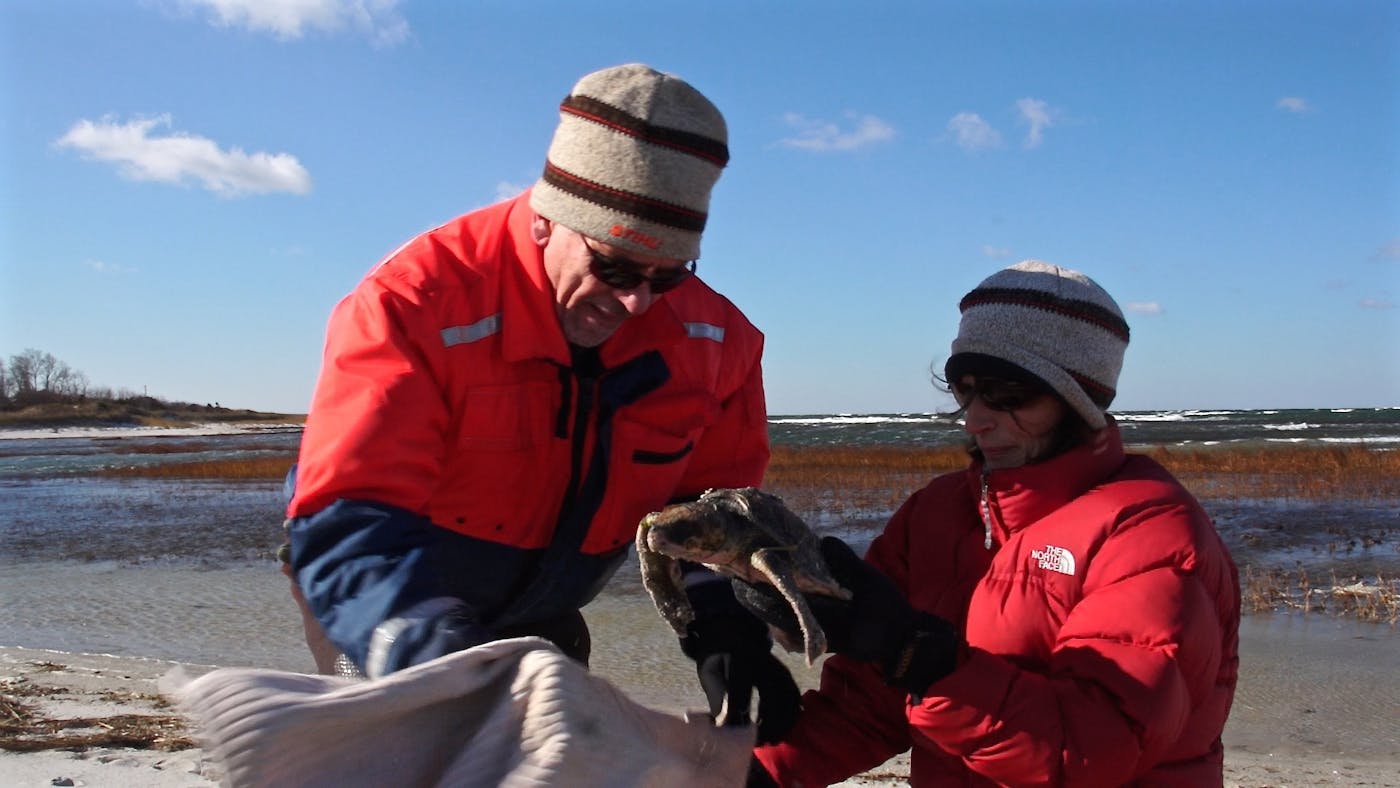Enhancing Care and Rehabilitation for Endangered Sea Turtles in Cape Cod
- Nature Conservation
- Ocean Conservation
- Women
- Southeast US Savannas & Forests
- Northern America Realm
- Daughters for Earth
| Bioregion | Southeast Savannas & Riparian Forests (NA25) |
| Category | Nature Conservation Our project categories represent one of three core solutions pathways to solving climate change. Energy Transition focuses on renewable energy access and energy efficiency. Nature Conservation includes wildlife habitat protection and ecosystem restoration, as well as Indigenous land rights. Regenerative Agriculture supports farmers, ranchers, and community agriculture. |
| Realm | Northern America The Project Marketplace is organized by the major terrestrial realms divided into 14 biogeographical regions – N. America, Subarctic America, C. America, S. America, Afrotropics, Indomalaya, Australasia, Oceania, Antarctica, and the Palearctic realm, which coincides with Eurasia and is divided into Subarctic, Western, Central, Eastern, and Southern regions. |
| Partner | National Marine Life Center |
One Earth’s Project Marketplace funds on-the-ground climate solutions that are key to solving the climate crisis through three pillars of collective action — renewable energy, nature conservation, and regenerative agriculture. This project protects and restores marine biodiversity.
In the US, when air and water temperatures decline in autumn, sea turtles who have not already migrated to warmer waters become cold-stunned (hypothermic) and begin to wash ashore. Cape Cod is home to the country's largest annual sea turtle cold-stunning event, with a yearly average growing to over 611 turtles.
Mild cases of hypothermia, including pneumonia, can be resolved in as little as three months. Complicated issues, which involve other conditions such as limb fractures, shell fractures, and infections, can take much longer.
Support for this project will help expand the sea turtle rehabilitation capacity at the National Marine Life Center (NMLC), led by conservationist Connie Merigo. Loggerheads and Kemp’s Ridley sea turtles, the most endangered sea turtle in the world, will benefit, and this recovery will help stabilize their population worldwide.
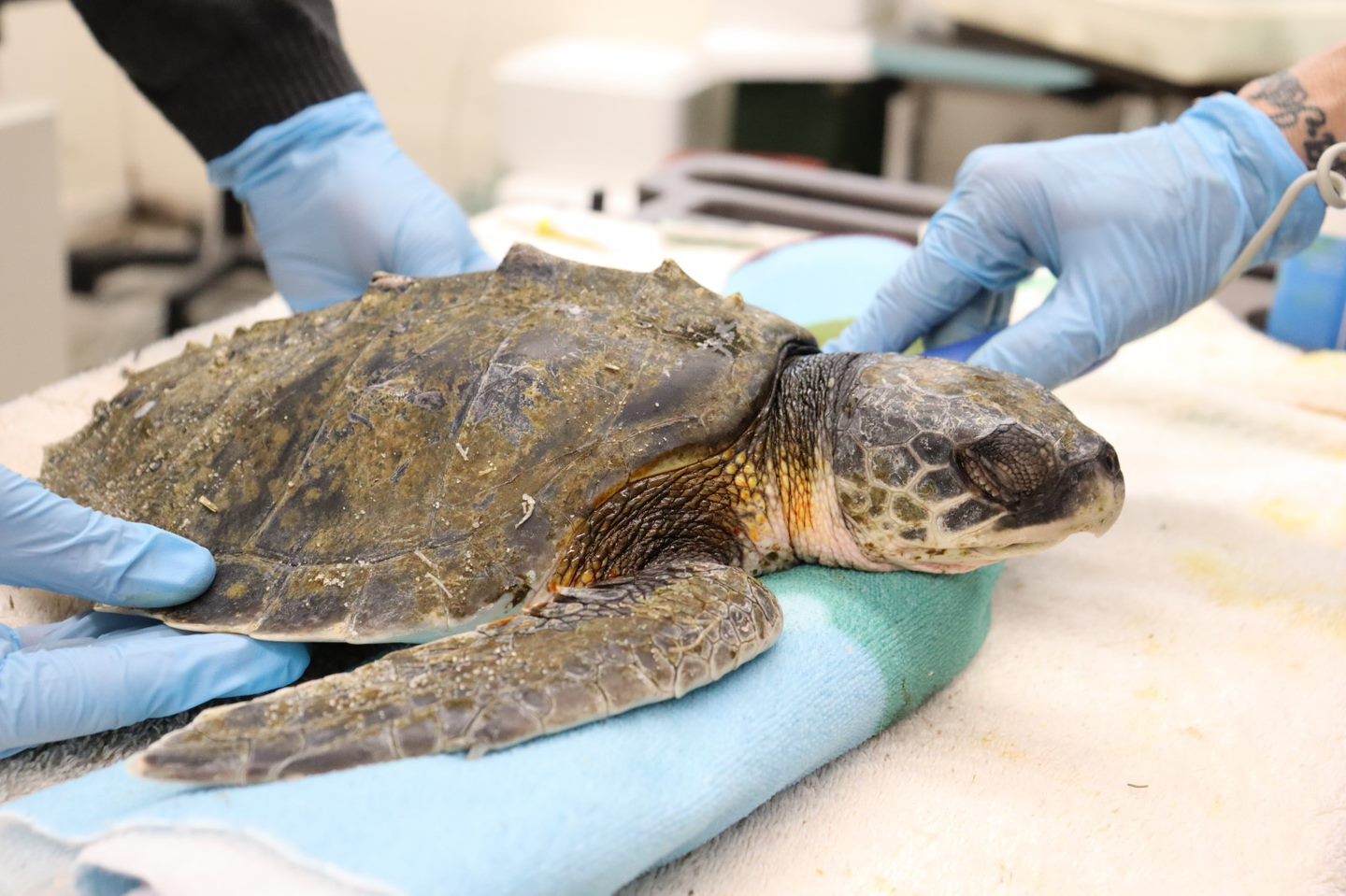
Life-saving measures to save a debilitated Kemp’s ridley sea turtle. Image Credit: National Marine Life Center
Scaling sea turtle rescue efforts
Currently, NMLC accepts between 10-30 turtles per season, leaving over 590 turtles to be cared for by other rehabilitation centers or not at all. Funding will directly go towards increasing the number of sea turtles helped each year.
Scaling the sea turtle rescue program will require hiring seasonal biologists, increasing veterinary time, and purchasing specialized equipment to manage mass caseloads. Buying and installing more rehabilitation pools and associated life support systems will be the focus of future funding sources.
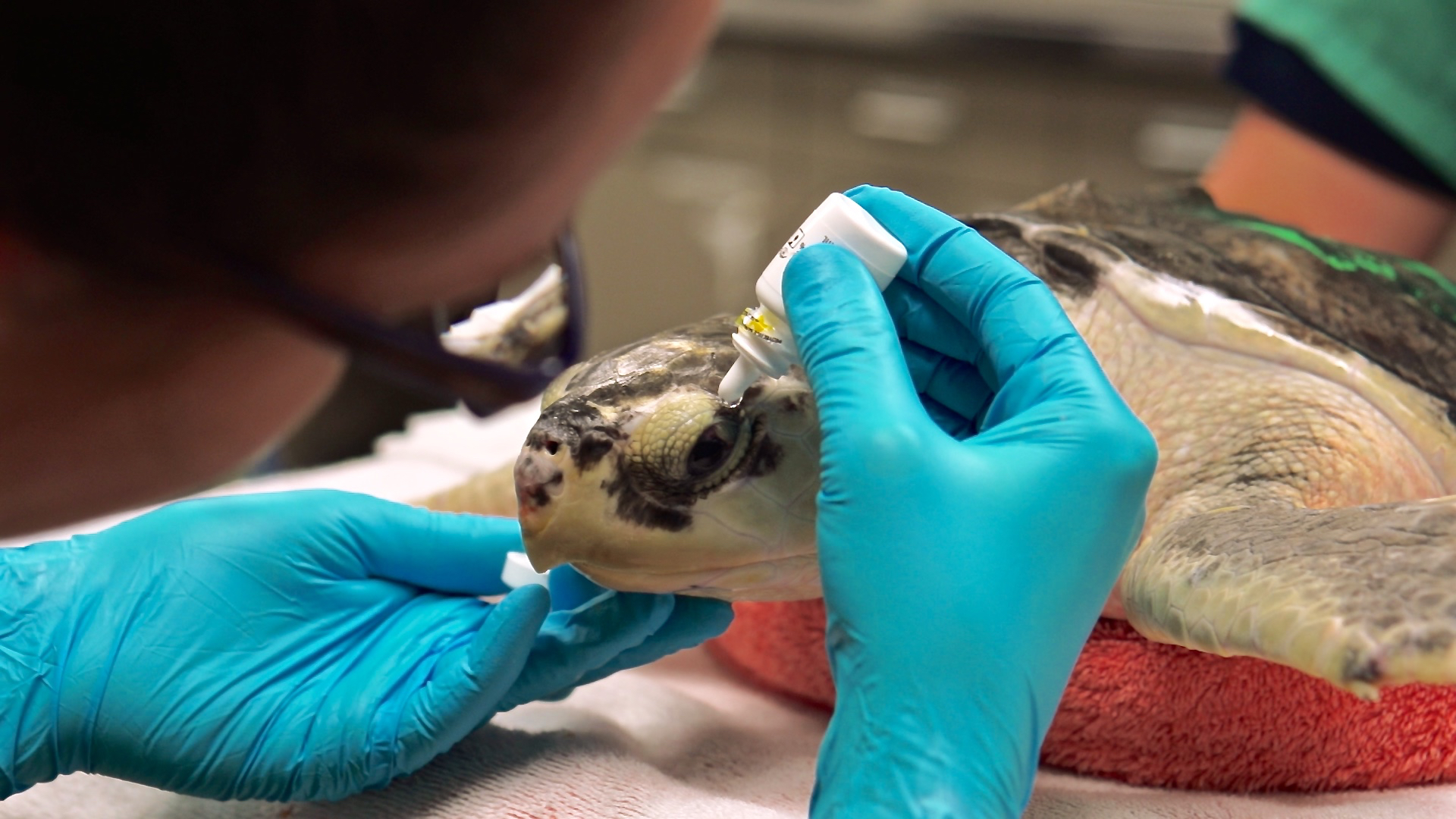
A cold stunned sea turtle receives eye medication. Image Credit: InterChange Media Art Productions
Caring for cold-stunned sea turtles
Upon arrival, turtles will be clinically evaluated, treated, and given a swim trial while maintaining temperature. Cold-stunned turtle temperatures should only be increased by five to ten degrees daily. Sea turtles often strand with core temperatures between 40-50 °F, which requires a slow warming process.
Diagnostics such as blood work, radiographs, microbiology cultures, wound care, medications, and other clinical care are catered to each animal based on its specific needs.
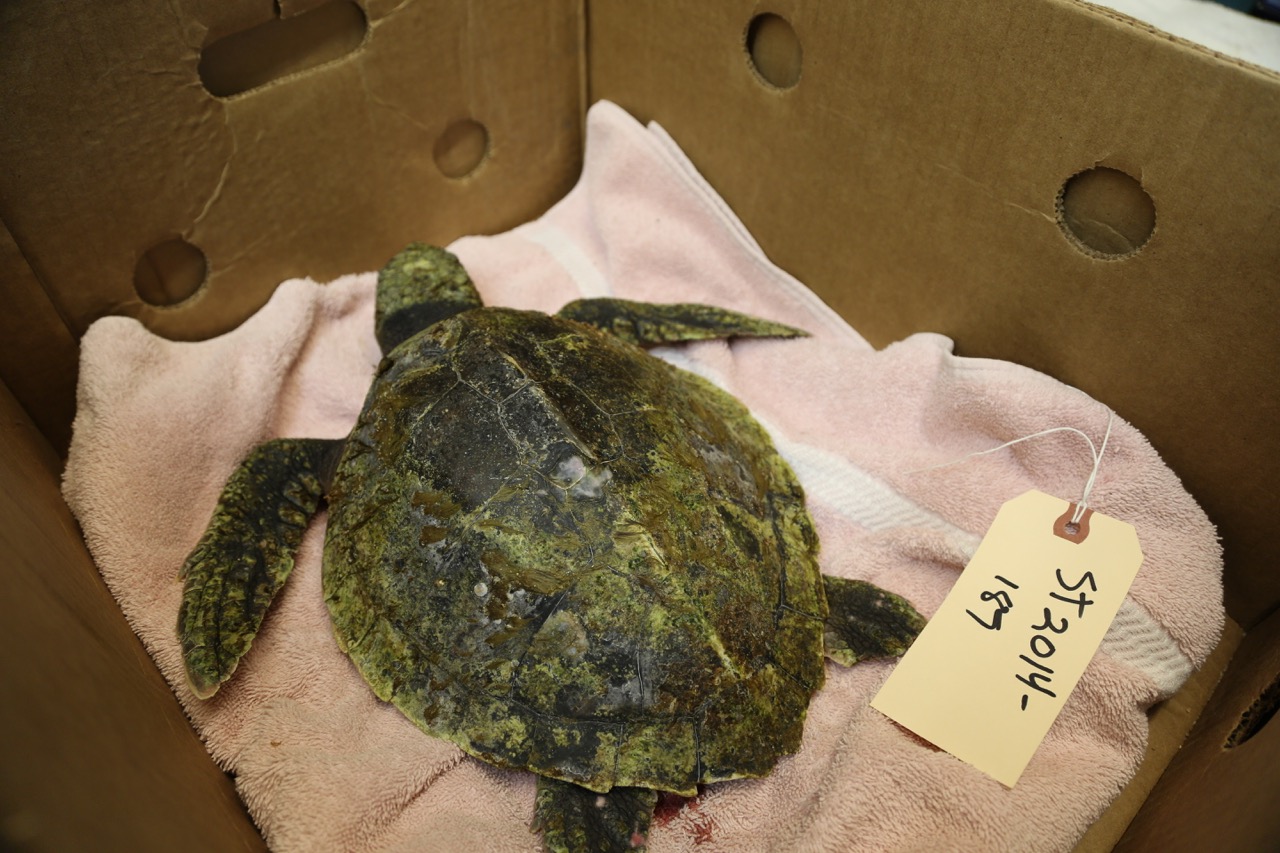
Debilitated sea turtle resting in a banana box prior to transport. Image Credit: InterChange Media Art Productions
Helping the most endangered species
While all sea turtles are either endangered or threatened, Kemp’s Ridley sea turtles are truly a species in peril. Biologists estimate that only 7,000 to 9,000 nesting females exist today.
Of the turtles rescued in Cap Cod every year, 89% are Kemp’s Ridley sea turtles, making this conservation effort a substantial contributor to population recovery worldwide.
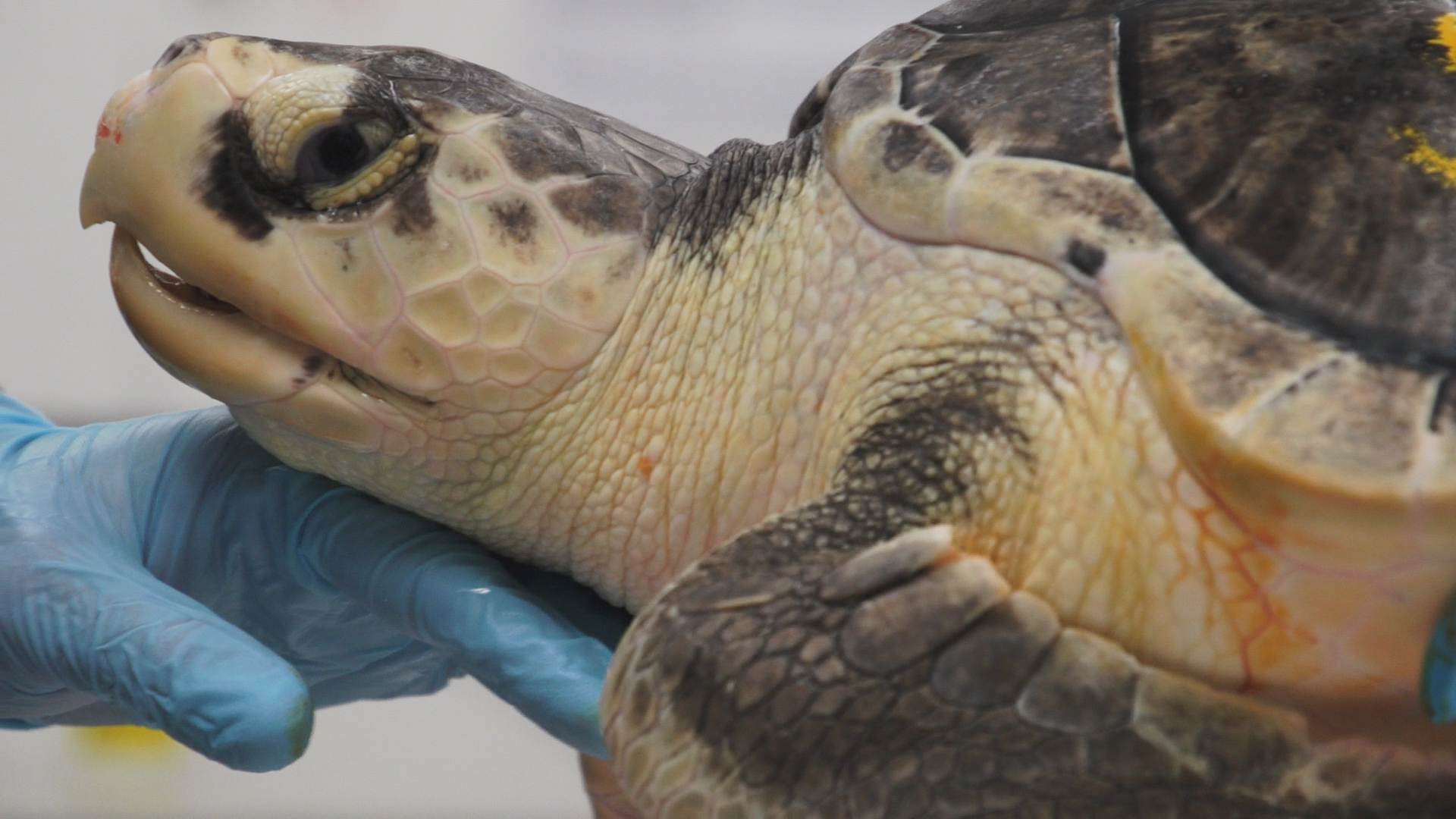
NMLC biologist takes a heart rate on an endangered cold stunned Kemp’s ridley sea turtle. Image credit: National Marine Life Center
Advancing aquatic conservation globally
Project manager, Connie Merigo, has over 30 years of experience in conservation, research, marine mammal and sea turtle rescue and rehabilitation, and financial management. Under her leadership, not only will sea turtles be saved, but the advancement of science and education in aquatic wildlife health and preservation will also be increased.
The rehabilitation and release of hundreds of cold-stunned sea turtles annually amidst the dangers posed by a rapidly warming planet and human activity enhances global marine ecosystems.
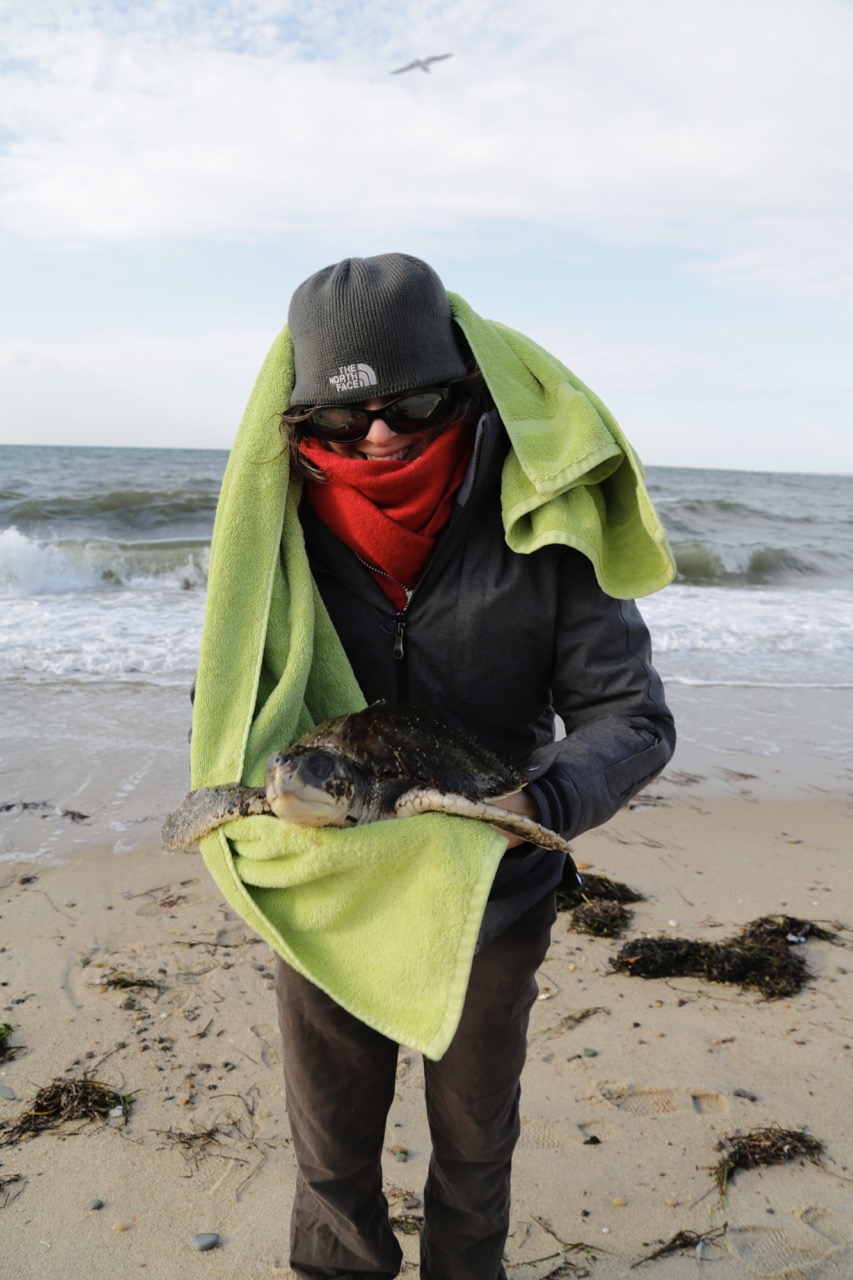
How saving marine life mitigates the climate crisis
Maintaining the balance of marine ecosystems can help mitigate climate change in several ways. First, they absorb and store large amounts of carbon dioxide. This process, known as Blue Carbon, can help to remove excess greenhouse gases from the atmosphere.
In addition, healthy marine ecosystems can also provide other critical climate-related benefits, such as protecting coastlines from storms and erosion and supporting the livelihoods of people who depend on the ocean for their livelihoods.
The simple act of warming one cold-stunned sea turtle can have a profound impact on its ecosystem that creates a positive ripple effect through our shared planet.
